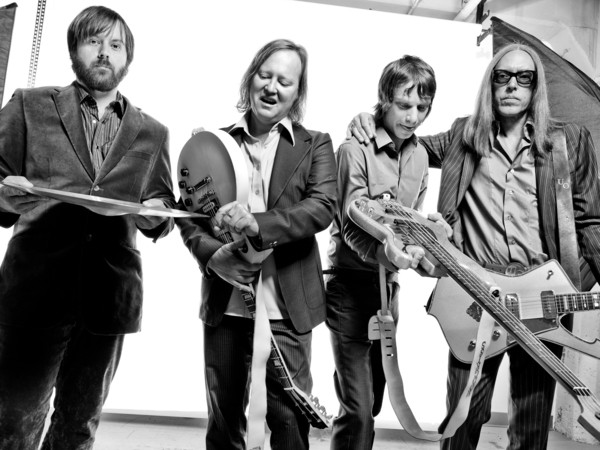

This was something we’d struggled with for every minute of studio time. He seemed concerned that someone might consider Saturation an accidental success. Roeser jumped in, needing to clarify his point. This is neither here nor there as the conversation strays endlessly toward the positive past and immediate future of the band – not the VH1 Behind the Music middle. Then in 2004, Nash and Roeser reformed Urge Overkill without Onassis. The “darker turn” was the post- Exit the Dragon (1995) feud that resulted in Roeser abandoning the project and Kato and Onassis carrying on the Urge brand. It took a darker turn after Saturation, but what I remember most was the laughter.” “It really was the pinnacle of having fun and making records. Nash corroborated this suggestion without much hesitation. If anything, it amplified a pre-existing swagger that had been eclipsed by urgent guerrilla-like recording sessions. The difference between an album like 1991’s The Supersonic Storybook and Saturation can’t just be attributed to time and pressure-free experimentation. Driving guitar rooted in garage grime and power rock vocals. Proper Urge-ness had already been established. Nash and King and the contemporaneous critics suggest Saturation represents a sonic departure from earlier Urge albums, but if you give it a hard listen, you’ll note there’s less distance than you might expect. We just couldn’t have made Saturation over a weekend.” We never had this kind of freedom before. we had 72 hours to experiment and realize a record. “Everything we did prior to Saturation was done for a bag of weed and a six pack.
The move caused friction between the band and the existing fan base, but Nash doesn’t believe an album like Saturation could have happened on an indie label. Stull would be the last albu Urge recorded for Touch & Go before they jumped into the big pool with Geffen to record Saturation. Touch & Go had been the launching pad for underground legends Butthole Surfers and The Jesus Lizard. PURCHASE THE SATURATION VINYL 25th ANNIVERSARY EDITION VIA PORTERHOUSE RECORDSĪlthough lacking crossover airplay, Urge had garnered significant indie cred and a passionate following from their time on the Chicago-based Touch & Go records. Released in 1992, the year prior to Saturation, the EP didn’t register on the charts – but a last minute inclusion on the record, the band’s cover of Neil Diamond’s “Girl You’ll Be a Woman Soon,” would become the band’s biggest international success. leg of the Nevermind tour that Urge Overkill went into the studio to record the Stull EP. In fact it was after touring with Nirvana on the U.S. Nirvana was as dark as it comes but they had a sense of humor, which was probably why we got along with them.” “We didn’t want to come off as a self-serious Alice in Chains – like come on, guys – are you really existing in a living hell? That image was in vogue, and we thought it was kind of painful for adults to be trafficking in it. We were aware of the musical climate…” Nash says, but stops short of finishing the thought. Where did velvet suit-jacketed, highball drinking, cigar chomping lounge lizards with raging, classic rock guitar riffs fit into the picture? The Grunge rock subculture had become a zeitgeist, capturing young ears with distorted guitar and nihilistic conversations about self-doubt and psychological trauma. With the release of Saturation and prominent placement in Quentin Tarantino’s pop-culture flashpoint Pulp Fiction, Urge Overkill assumed the arena-rock throne only to find that most of the crowd had tossed on their flannels, lit a clove cigarette, and migrated to the dive bar next door. Nash and King have experienced success and creative devastation and messy breakups and reunions since forming Urge Overkill at Northwestern University in the mid-’80s.ĭuring 19, the band (the lineup then consisting of Roeser, Nash, and drummer Blackie Onassis) seemed poised for ascendance to rock royalty.

Roeser doesn’t sound rock-weary so much as contemplative. He says they’re just being “less aggressive” about everything. They’ve been playing odd gigs when the opportunity arises and planning the release of a new album, their first since 2011’s Rock & Roll Submarine and only the second in the last 23 years. PURE SOUND DOESN’T FADE: URGE OVERKILL’S SATURATION AT 25 A CONVERSATION WITH URGE OVERKILLĮddie “King” Roeser and Nathan Kaatrud, aka Nash Kato, haven’t been proceeding at a regular pace, Roeser admits, but he’s not confessing a lack of relevancy or a disregard for the business of making music.


 0 kommentar(er)
0 kommentar(er)
